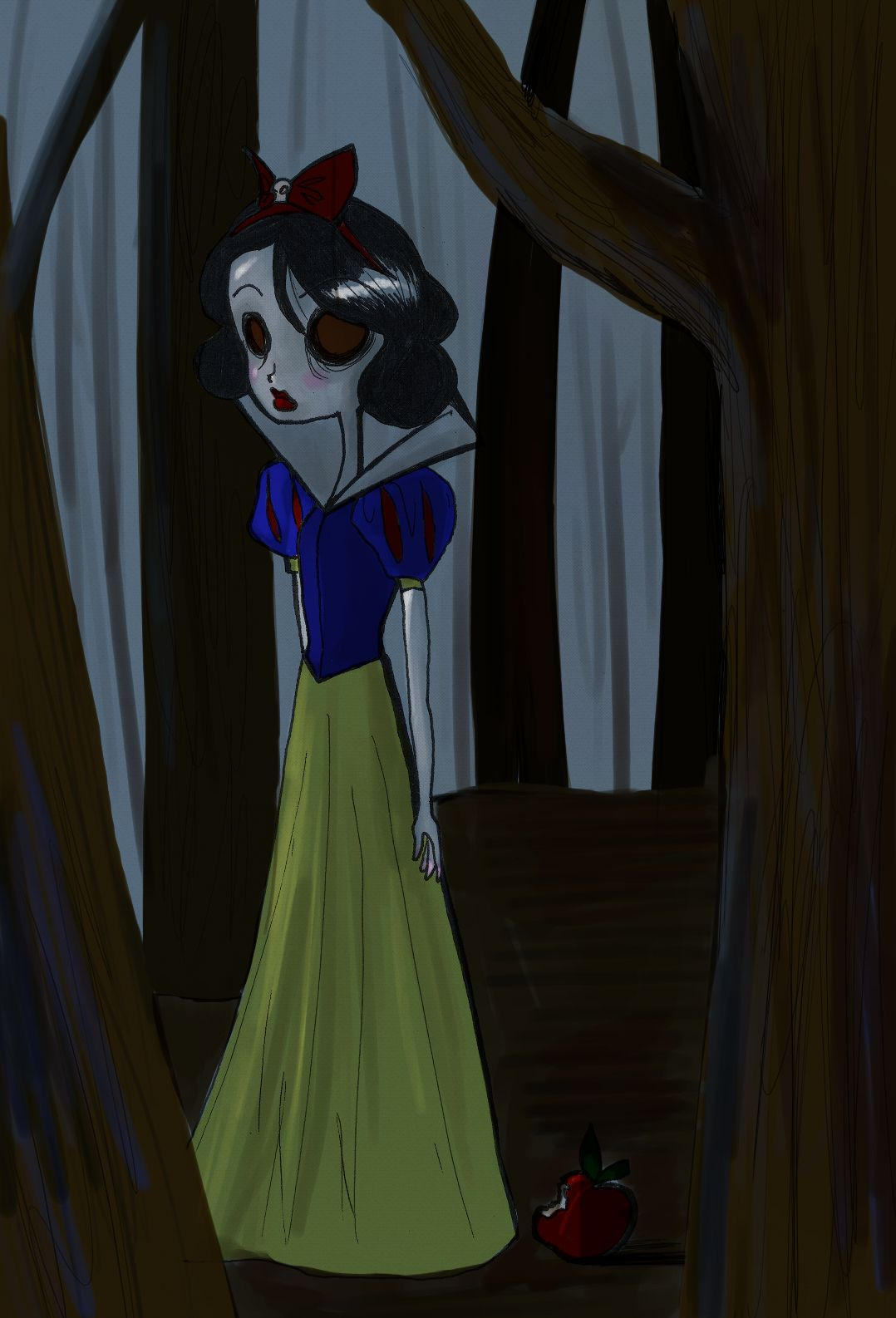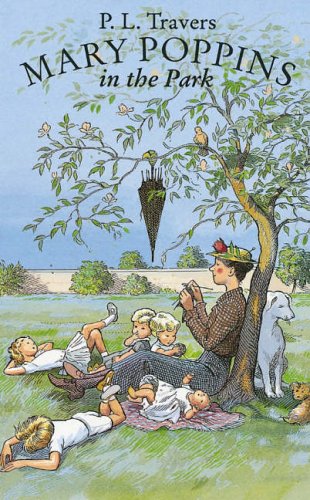Tuesday, November 30, 2010
Beastly trailer
I'm ashamed to admit I have yet to read the book "Beastly" by Alex Flinn...I would probably have been excited about the movie version but the moment I heard Vanessa Hudgens was cast as the Beauty character I knew I could never take it seriously. She's gorgeous but one of the most annoying actresses in the world...which, ironically, is completely countering the "substance over style" her character claims she goes for in this trailer...
Saturday, November 27, 2010
Beauty of the Beast

Image available as ipad case (or iphone) from Kirstin Mills
One of the reasons I love the band Nightwish is because of songwriter Tuomas Holopainen's love for Beauty and the Beast-the theme can be tracked through each of their albums. In the album "Century Child", this is especially evident through the phrase "Beauty of the Beast." I love the idea of challenging perceptions; maybe the Beast is beautiful, either truly physical attractive, in the eyes of some beholders, or in his character-in the French tale, he is innocent and Beauty is the one who breaks her word to him. Which is connected to the image above (though the illustration has nothing to do with Nightwish), for here the hint is that the beast is within the Beauty (or...Little Red Riding Hood) as well. In typical fairy tales, the heroes and villains are obvious. In Beauty and the Beast, it's not so obvious, which I appreciate.
The opening song of the above mentioned album, "Bless the Child," contains these words at the end of the beginning narrated part:
" One night I dreamt a white rose withering,
a newborn drowning a lifetime loneliness.
I dreamt all my future. Relived my past.
And witnessed the beauty of the beast"
The last song of the album is titled "Beauty of the Beast."
The opening words "Trees have dropped their leaves/clouds their waters/all this burden is killing me" always makes me think of this as a late fall song, so here we are.
The lyrics "I fear I will never find anyone
I know my greatest pain is yet to come
Will we find each other in the dark
My long lost love" could apply to any single person...but I always imagine them being the Beast, before he's met Beauty, despairing of ever finding someone to break the spell.
Also from this song: " My home is far but the rest it lies so close
With my long lost love under the black rose
You told I had the eyes of a wolf
Search them and find the beauty of the beast"
and
" Sanest choice in the insane world:
Beware the beast but enjoy the feast he offers"
Not sure exactly what Tuomas means by these words...I have my ideas, and I'm sure each person has their own interpretation as well.
Sunday, November 21, 2010
Roald Dahl's Revolting Rhymes-Little Red Riding Hood

As soon as Wolf began to feel
He went and knocked on Grandma's door.
When Grandma opened it, she saw
The sharp white teeth, the horrid grin,
And Wolfie said, "May I come in?"
Poor Grandmamma was terrified,
"He's going to eat me up!" she cried.
And she was absolutely right.
He ate her up in one big bite.
But Grandmamma was small and tough,
And Wolfie wailed, "That's not enough!
I haven't yet begun to feel
That I have had a decent meal!"
He ran around the kitchen yelping,
"I've got to have a second helping!"
Then added with a frightful leer,
"I'm therefore going to wait right here
Till Little Miss Red Riding Hood
Comes home from walking in the wood."
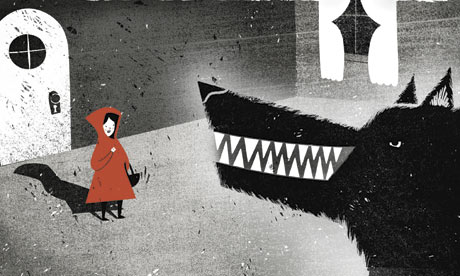
Tyler Garrison
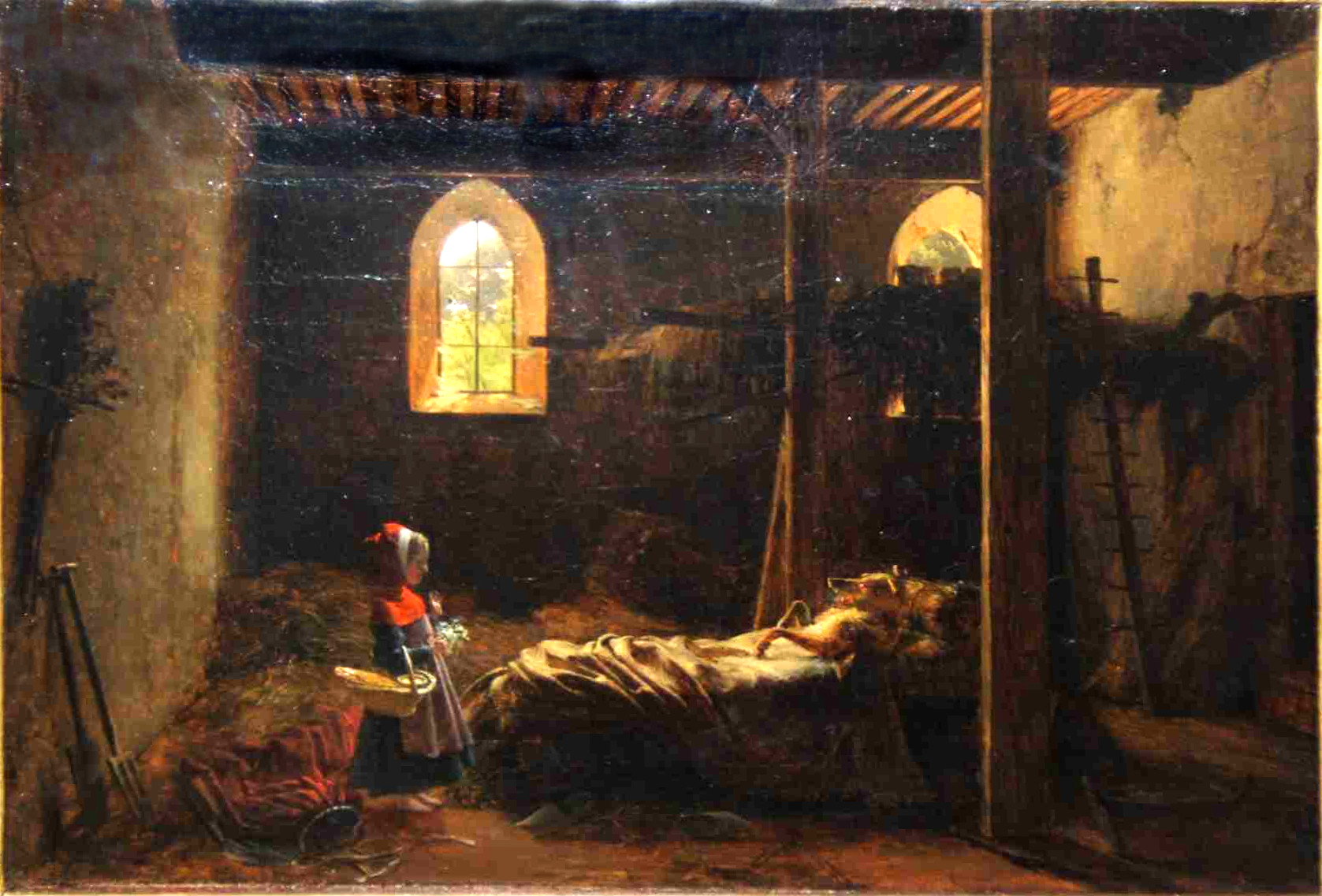
Fleury Francois Richard
He quickly put on Grandma's clothes,
(Of course he hadn't eaten those).
He dressed himself in coat and hat.
He put on shoes, and after that,
He even brushed and curled his hair,
Then sat himself in Grandma's chair.
In came the little girl in red.
She stopped. She stared. And then she said,
"What great big ears you have, Grandma."
"All the better to hear you with,"
the Wolf replied.
"What great big eyes you have, Grandma."
said Little Red Riding Hood.
"All the better to see you with,"
the Wolf replied.
He sat there watching her and smiled.
He thought, I'm going to eat this child.
Compared with her old Grandmamma,
She's going to taste like caviar.
Then Little Red Riding Hood said, "
But Grandma, what a lovely great big
furry coat you have on."
"That's wrong!" cried Wolf.
"Have you forgot
To tell me what BIG TEETH I've got?
Ah well, no matter what you say,
I'm going to eat you anyway."
The small girl smiles. One eyelid flickers.
She whips a pistol from her knickers.
She aims it at the creature's head,
And bang bang bang, she shoots him dead.
A few weeks later, in the wood,
I came across Miss Riding Hood.
But what a change! No cloak of red,
No silly hood upon her head.
She said, "Hello, and do please note
My lovely furry wolfskin coat."
Thursday, November 18, 2010
Happy Mickey Mouse Day!

Mickey started out looking a bit different that he does today (his name was also originally Mortimer) due to limitations in animation. The animators first went with what was easiest to draw, since they had to create 700 feet of film every two weeks. Mickey gradually changed to his present image to give him more character.
Mickey was also different in personality at first-he was meaner and more controversial-"he was quick and cocky and cruel-at best a fresh and bratty kid, at worst a diminutive and sadistic monster...after a delightfully bratty beginning he matured into a terrible square, simply incapable of the kind of irreverent comic turns that a great comedian must master". Disney changed him to make him nicer, but he lost some of his personality that way, so Donald and Pluto were added- as less sacred, they could get away with losing their tempers while Mickey continued to be the hero.
The distributors of the films believed Mickey was the star and the selling point-Disney realized that the technique was key, and realized sound was a huge way to make movies successful. Steamboat Willie was the first movie to have synchronized sound and visuals. Disney drew a slash of ink on every 12th frame, so the screen would flash white every half second, and the conductor's job was to keep the music in time with the flashes. The soundtrack was originally created with lots of sound effects by musically illiterate animators. Eventually, the costs of recording the music for the soundtrack grew more than expected, and Roy Disney had to sell Walt's favorite car to fund it.
Disney also introduced the idea of using great classical music to accompany cartoons in "The Skeleton Dance". This was considered gruesome at the time (the cartoon, not the classical music)-the subject matter didn't go well with the animal characters, so they were absent. This is supposed to be set to Saint-Saens' "Dance Macabre," of which I hear...maybe 5 seconds' worth, altered. Am I crazy?..
Tuesday, November 16, 2010
Mercedes Lackey's The Black Swan
The first time I read this book was a while ago, and I think it was probably the first book I ever read with sexual content in it, so it was shocking to me and was really the only thing I remember about it. And Siegfried's character starts out like the prince in Firebird that I didn't like-a chauvenist who has sex with whoever he wants to, whenever he wants to, and has no compassion for the females or servants he uses. Now some people are indeed more liberal than the stereotypical chaste fairy tale characters, but this is the other extreme- throughout Firebird it seemed like this was a totally normal, healthy way for a prince to behave-"ah, boys will be boys." So Siegfried made me uncomfortable at the beginning of Black Swan-I wasn't sure how much was supposed to upset me and how much was supposed to be accepted by the modern reader. Although Siegfried is supposed to get you riled up on some level, at least if you're female (a lot of guys probably think his existence would be the dream life): at one point he muses two separate ladies he intends to have as his newest sex partners, "I'll have to make it clear from the start to both of them that I am the master, and I won't tolerate either of them acting as if she has any rights over me..."
But there's good news for this book: Siegfried grows as a character and has a change of heart after he is haunted by the ghost of a gypsy girl he raped, and a very powerful dream scene.
Overall, I was impressed by the characters as well as the plot. It's rich in symbolism, which is very rare for modern books...the contrast and paralells between the father/daughter relationship of von Rothbart/Odile and the mother/son- Clothilde/Siegfried. Mirrors are important, for they "reveal the truth," and masks are symbolic-literal physical masks, as seen on the book cover, as well as the masking of emotions. The concept of faithfulness and loyalty to lovers is a big one, as well as gender stereotypes-how people (male and female) tend to negatively stereotype the entire opposite gender.

In this version, von Rothbart captures women he believes have been unfaithful traitors, and deems them worthy of their punishment as swan maidens. Odile, at the beginning, is devoted to her father and only wishes to please him; she believes that the flock are wayward women. She practices her magic in order to gain rare approval from her father, and finally is forced to realize that the swan maidens are not what she thought, nor is her father. The book never reveals why von Rothbart is so insistent on punishing his view of sinful women, but I assumed his wife cheated on him and he made it his life's mission to punish the female race out of bitterness (at one point, Odile reflects that her own silvery white hair is odd compared to her father's red hair. She supposes it's due to magic, but the reader is left to wonder if she's really his daughter at all).
I also love this book because Lackey was clearly familiar enough with the ballet to nod to it occasionally-she refers to the four youngest swans, and the first time you meet them they are dancing-this is the Dance of the Cygnets:
These are, apparantly, vegan ballerinas...
Also, in the final ballroom sequence, she mentions that some of the guests are dressed in costumes of different countries, and that they perform dances for the prince. These are all dances performed in the ballet-here's ABT's Hungarian Dance:
In my opinion, this book is far above Firebird in sophistication. The characters were intriguing, and their relationships with one another were fascinating; the characters had growth, the plot was imaginative and complex, the real world was blended expertly with a world of magic that was thrilling yet believeable; the climax was very exciting. Go read it. It is, however, intended for mature audiences, so don't give it to your little ballet-loving neice for Christmas.
Monday, November 15, 2010
The Children in the Story
""But-" she protested. "How can it be? You are in Once Upon a Time. And that is long ago."
"Oh, no!" said Veritain. "It's always. Do you remember your great-great-great-great-grandmother?"
"Of course not. I am much too young."
"We do," said Florimund, with a smile. "And what about your great-great-great-great-granddaughter? Will you ever see her, do you think?"
Jane shook her head a little wistfully. That charming far-away little girl-how much she would like to know her!
"We shall," said Veritain confidently.
"But how? You're the children in the story!"
Florimund laughed and shook his head.
"You are the children in the story! We've read about you so often, Jane, and looked at the picture and longed to know you. So today-when the book fell open-we simply walked in. We come once into everyone's story-the grand-parents and the grand-children are the same to us. But most people take no notice." He sighed. "Or if they do, they forget very quickly. Only a few remember."
Jane's hand tightened on his sleeve. She felt she would never forget him, not if she lived to be forty."
The princes, in the book, step out of the Silver Fairy Book. Which, when I read it, I assumed was one of the Andrew Lang colored fairy books. After searching for it, it turns out that there is no Silver Fairy Book, or a story about the three Princes Veritain, Florimund, and Amor, that I could find. It would have been nice if it were more well-known fairy tale children, like Hansel and Gretel, because the reader could relate to them more. Later in the chapter, the adults in the story are tested and all fail to recognize the fairy tale characters but for a brief moment when they remember their childhood-except, of course, for Mary Poppins and Bert, who always remember.
Friday, November 12, 2010
The Flute Player-Apache Tale
Wednesday, November 10, 2010
The Lost Spear-an "African" fairy tale
Sunday, November 7, 2010
Bert Appermont's Rapunzel/Midsummer Night's Dream opera
Okay, imagine this performed by a professional orchestra and not a high school band...I actually really like the music, but I'm a sucker for this kind of music: minor 3/4, an eerie glockenspiel ostinato, anything stereotypical for "fantasy" music. (The third and fourth movements are cheesy to me, but this could honestly just be a matter of personal taste and not a reflection of quality change between the movements.) The narration is part of the score and tells the traditional Rapunzel story.
Also related to music, but another Chicago event-a bit more avant garde, though very professional-the Lyric Opera is putting on Benjamin Britten's "Midsummer Night's Dream." Not from the same production, but here's a sample of the opera:
Saturday, November 6, 2010
The Issue of the "Moral" in Bluebeard
"Curiosity, in spite of its charm,
Too often causes a great deal of harm.
A thousand new cases arise each day.
With due respect, ladies, the thrill is slight,
For as soon as you're satisfied, it goes away,
And the price one pays is never right."

Illustrations by Walter Crane
Thursday, November 4, 2010
Fractured Fairy Tales: Beauty and the Beast
Here's the Fractured Fairy Tales' Beauty and the Beast, by A.J. Jacobs, as told on the Rocky and Bullwinkle show. It begins like so:
"Once upon a time there was a magnificent golden castle on a silver cloud high up in the sky, which has nothing to do with anything because our story is about an old woodchopper who lived in a shack, but that's a good way to start a fairy tale. The old man was very happy, but he had a daughter, who was very unhappy because...well, she was rather plain. Actually, she was really plain. In fact, she had a face like five miles of bad road."
It's really pretty funny. Also, here's Cutie and the Beast, which is actually closer to the fairy tale. I won't give endings away...but they both end with a very modern twist.
To read more fractured fairy tales, find a list here.This image is random, but for this post I searched for "Humorous Beauty and the Beast" and this came up:
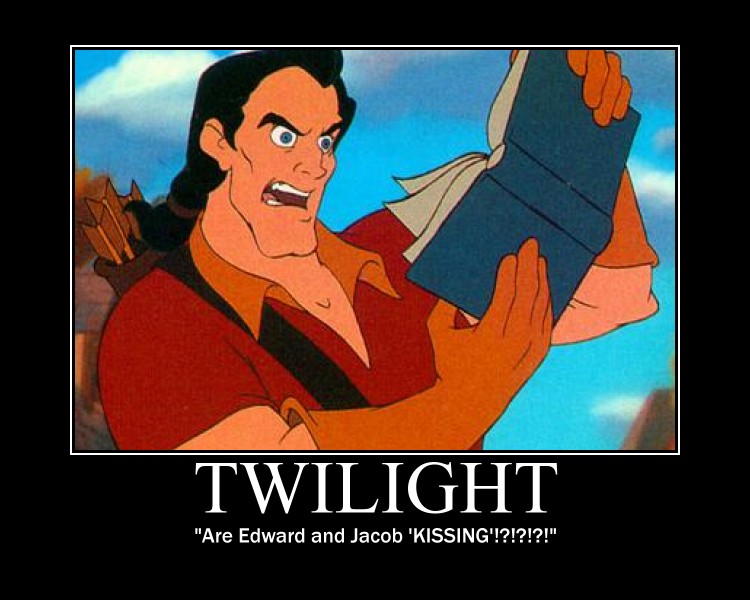
Link:Gaston
Wednesday, November 3, 2010
Copyrighted Beauty and the Beast pictures
Angela Barret
Errol Le Cain
Kirsi Salonen
Robert Sabuda-pop-up book
Mercer Mayer
I'll add more to this page as i find them. By the way, sometimes I find images by doing a google or Bing search for:' "Beauty and the Beast" -Disney'. You'll still get Disney images, (like a lot of community and high school productions of the musical,) but it weeds out a lot.
Tuesday, November 2, 2010
Disney villains


Dragons

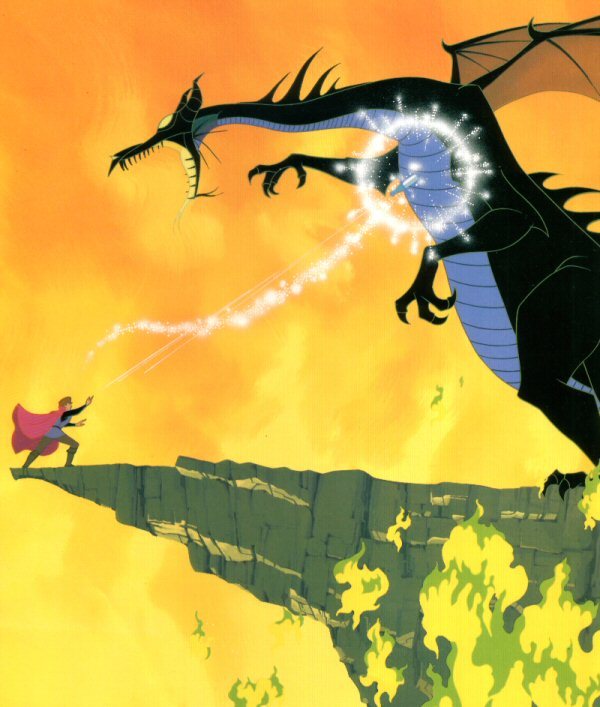
Monday, November 1, 2010
Chicago play-Peter Pan

An exerpt: "This "Peter Pan" loses almost all of the sharp contrasts in Barrie's writing, fails to hold on to the narrative thread of his storytelling and flattens everything into an overwrought and tediously theatrical landscape. More problematic yet, the piece feels weirdly clueless about parents and children, which is the very core of a book that, while strange, surely hits on some of most painful truths of our home lives.
"Peter Pan," which was born out of an unusual and now well-documented, turn-of-the-century friendship that Barrie had with a family of five boys, can be played darkly or lightly or (ideally) on twin tracks for kids and adults."
I love that last line and think it applies to most stories-"Can be played darkly or lightly or (ideally) on twin tracks for kids and adults." I believe good children's stories should also have appeal for adults and that it's totally possible to achieve that balance, as the original Barrie play itself proves.





